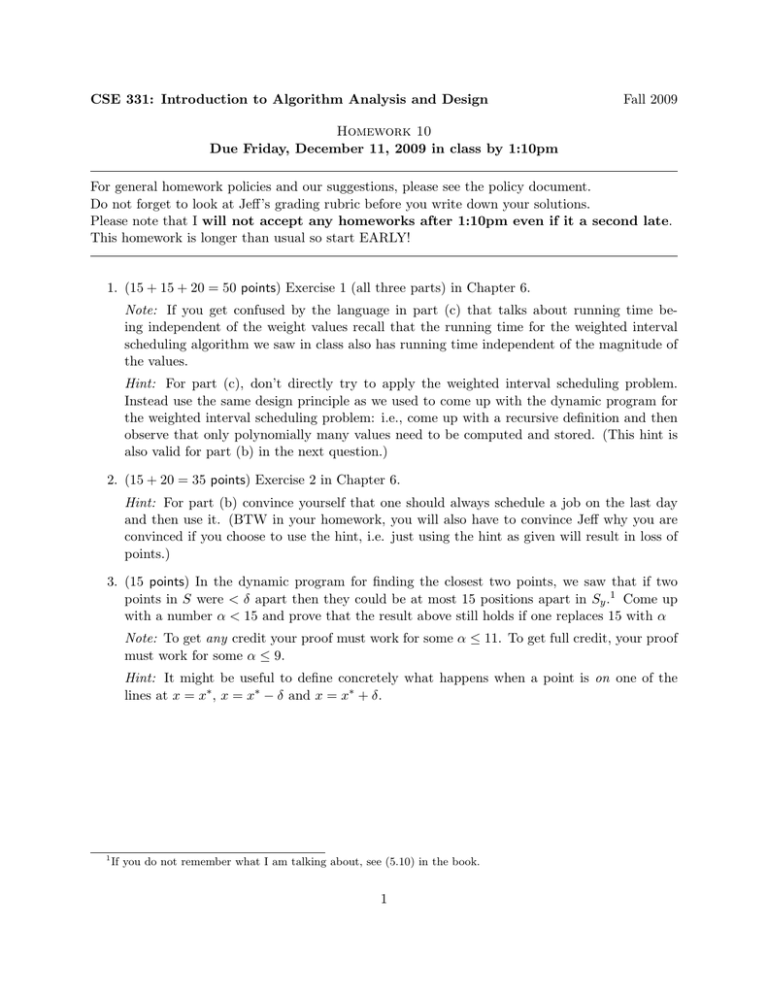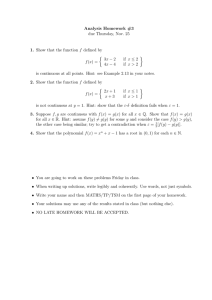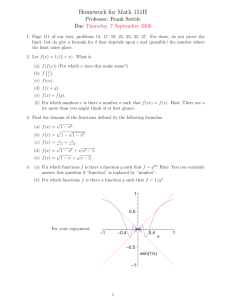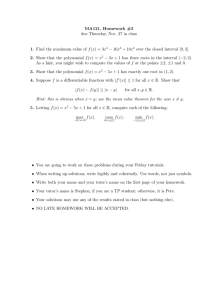CSE 331: Introduction to Algorithm Analysis and Design Fall 2009 Homework 10
advertisement

CSE 331: Introduction to Algorithm Analysis and Design Fall 2009 Homework 10 Due Friday, December 11, 2009 in class by 1:10pm For general homework policies and our suggestions, please see the policy document. Do not forget to look at Jeff’s grading rubric before you write down your solutions. Please note that I will not accept any homeworks after 1:10pm even if it a second late. This homework is longer than usual so start EARLY! 1. (15 + 15 + 20 = 50 points) Exercise 1 (all three parts) in Chapter 6. Note: If you get confused by the language in part (c) that talks about running time being independent of the weight values recall that the running time for the weighted interval scheduling algorithm we saw in class also has running time independent of the magnitude of the values. Hint: For part (c), don’t directly try to apply the weighted interval scheduling problem. Instead use the same design principle as we used to come up with the dynamic program for the weighted interval scheduling problem: i.e., come up with a recursive definition and then observe that only polynomially many values need to be computed and stored. (This hint is also valid for part (b) in the next question.) 2. (15 + 20 = 35 points) Exercise 2 in Chapter 6. Hint: For part (b) convince yourself that one should always schedule a job on the last day and then use it. (BTW in your homework, you will also have to convince Jeff why you are convinced if you choose to use the hint, i.e. just using the hint as given will result in loss of points.) 3. (15 points) In the dynamic program for finding the closest two points, we saw that if two points in S were < δ apart then they could be at most 15 positions apart in Sy .1 Come up with a number α < 15 and prove that the result above still holds if one replaces 15 with α Note: To get any credit your proof must work for some α ≤ 11. To get full credit, your proof must work for some α ≤ 9. Hint: It might be useful to define concretely what happens when a point is on one of the lines at x = x∗ , x = x∗ − δ and x = x∗ + δ. 1 If you do not remember what I am talking about, see (5.10) in the book. 1




